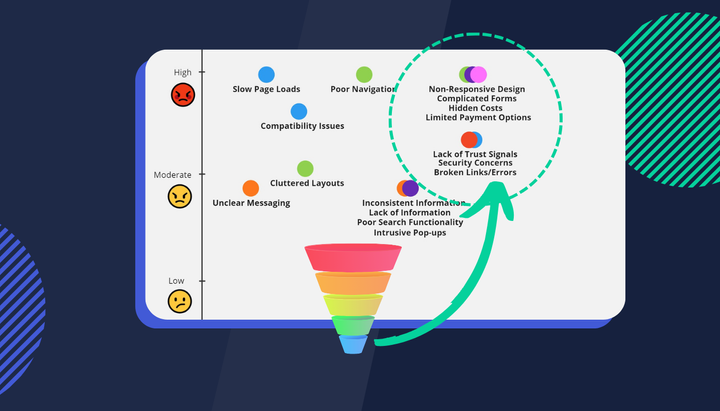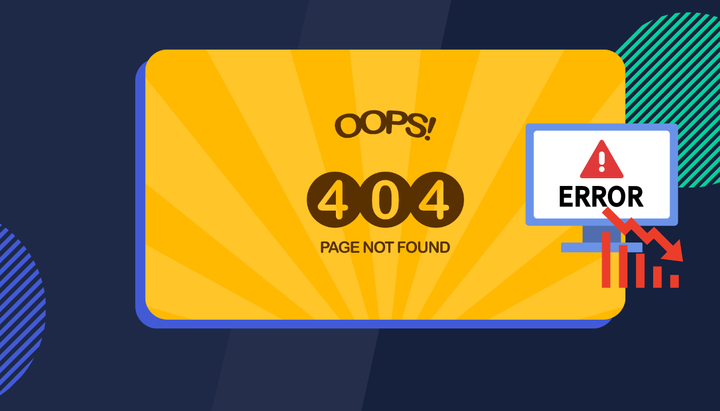How To Maximise Your Next Website Optimisation Project
With 80.8 Percent of Australians now shopping online, having a good Conversion Rate Optimisation (CRO) program is now more important than ever for ensuring you’re converting more website visitors into customers.

With 80.8 Percent of Australians now shopping online, having a good Conversion Rate Optimisation (CRO) program is now more important than ever for ensuring you’re converting more website visitors into customers.
Yet many businesses aren’t using their website to their full potential when it comes to maximising their conversions. Here’s a quick look at what sets a good optimisation plan apart from a bad one.
How Conversion Rate Optimisation usually works
With the aim of increasing the number of website visitors that convert into customers, here is the standard Conversion Rate Optimisation process that businesses usually follow:
Step 1 - Gather User Behaviour Data
The aim here is to gather as much information as to step into the shoes of customers.
Some key questions that might be asked:
- Does the website and content load properly?
- Is your website easy to navigate?
- Do they find and read all the relevant content?
- Can they purchase easily without blockers?
Step 2 - Identify where and why users don’t convert
A combination of funnel reporting and session replay tools are used to understand at which point users leave the funnel, and why they are leaving.
Common reasons:
- Website errors block purchases
- Users need more information to help with their purchase
- The price is too high or customers aren’t getting enough value
- Campaigns tell customers one thing, and the checkout says another
- Customers don’t have enough urgency to purchase now
Step 3 - Fix the issues found
Once identifying where and why users drop out, it’s time to trial fixes that remove reasons for customers to not convert.
If improvements are obvious (I.e. a link is broken) you should go ahead and fix them immediately. For issues that aren’t as clear, proper A/B testing can be used to test and measure improvements.
Step 4 - Measure impacts, learn what works, optimise
The final step is measuring tested improvements, learning what has worked, and sharing those learnings with the wider team so that fixes can be rolled out on the website as permanent improvements.
Learnings should also be brought into the next round of optimisation and testing to constantly improve results.
Where Website Optimisation Projects Tend to Fall Down
With the aim of increasing the number of website visitors that convert into customers, here is the standard Conversion Rate Optimisation process that businesses usually follow:
Incomplete Data
If you don’t collect enough data, there will be information gaps in trying to understand your customer. You might be able to understand where users drop off, but not why, which leaves a lot of guesswork.
Not having enough data upfront means that you will be limited in both pinpointing where issues occur, and also in exploring the potential reasons why issues occur.
Uninformed tests and low success rates
In most cases, data is used to measure if a test was successful, but it’s not always used effectively to inform what tests should be run in the first place.
Testing is useless without context and informing tests properly with comprehensive data will majorly impact the success rate of AB testing.
Insights collaboration can be slow
Website data is often owned by only a few people, and the process of sharing results and information can be slow and tedious.
It can often take a long time for everyone to get up to speed on results so that a decision can be made, and an action taken.
Incomplete Data
If you don’t collect enough data, there will be information gaps in trying to understand your customer. You might be able to understand where users drop off, but not why, which leaves a lot of guesswork.
Not having enough data upfront means that you will be limited in both pinpointing where issues occur, and also in exploring the potential reasons why issues occur.
Uninformed tests and low success rates
In most cases, data is used to measure if a test was successful, but it’s not always used effectively to inform what tests should be run in the first place.
Testing is useless without context and informing tests properly with comprehensive data will majorly impact the success rate of AB testing.
Insights collaboration can be slow
Website data is often owned by only a few people, and the process of sharing results and information can be slow and tedious.
It can often take a long time for everyone to get up to speed on results so that a decision can be made, and an action taken.
Strategies to Maximise Your Optimisation Plan
With the aim of increasing the number of website visitors that convert into customers, here is the standard Conversion Rate Optimisation process that businesses usually follow:
Strategy 1 - Inform your optimisation with as much data as possible
Use as much behavioural data as possible to inform what tests should and shouldn’t be run.
The more website data you can have on hand, the more questions you can answer before you even begin testing.
You will naturally increase your conversion rates, and identify fixes that can be done even without the testing process.
Strategy 2 - Ruthlessly dig into why funnel abandonment happens
Focus on key funnel abandonment points, and ruthlessly dig into why users are leaving.
The closer you can understand this, the less guessing you need to do to find improvements that work.
Having lots of behavioural data in strategy 1 will also help out a lot here.
Strategy 3 - Reduce the number of tests, and increase testing success rates
Do more with less effort. Testing can be a long process, so ensure you use as much data as you can upfront to inform what you test and why.
This will let you focus more on the tests that will have a big impact on your business. Some fixes will be obvious, fewer tests will need to be run, and conversion rates will increase.
With the right data, you’ll be able to achieve much more with less.
Step 4 - Centralise conversations around the optimisation
With so many moving parts to making an optimisation plan successful, you need to centralise communications as close to where the optimisation happens as possible.
This is to reduce the time taken to get everybody across results, insights, and next steps.
You’ll also have much stronger collective knowledge to inform your optimisation approach from the start.



